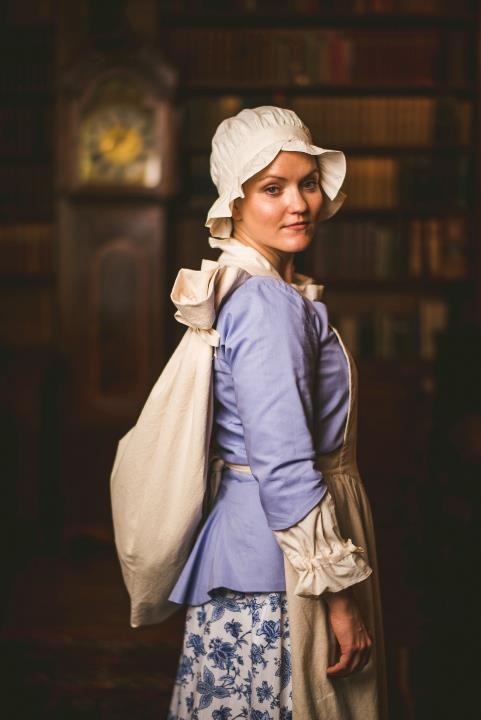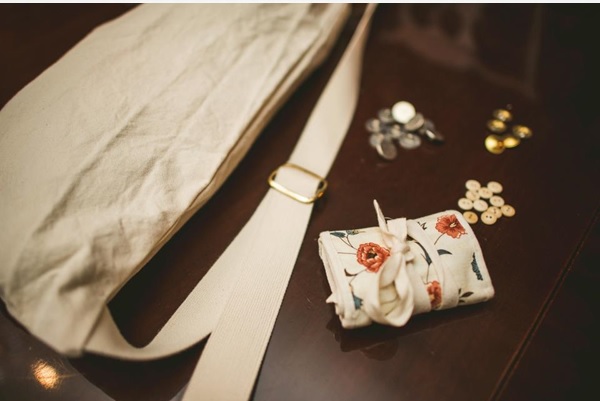Women and the American Revolution
Although the Revolutionary War was primarily fought by men, women played an important role in the American Revolution on the battlefield, in camp, and at home. Many women followed the Continental Army providing critical support to keep the army fed and clothed.
They also provided moral support. Several wives of Continental Army generals, including Martha Washington, Catharine Greene, and Lucy Knox joined their husbands while at camp. Given their high social standing, these women lived in relatively comfortable settings, usually in homes located near camp. While with their husbands, they hosted dinner parties and other events for the army’s generals and other officers.
Women occasionally served in combat. Sometimes, women would assist artillery crews by pouring water on the cannons to cool them down during battle. Hannah Corbin was performing such duty at the Battle of Monmouth on June 28, 1778. When her husband was wounded, Corbin took his place at the cannon. It is likely she is the real person behind the story of “Molly Pitcher.” Some women, like Deborah Sampson, disguised themselves as men to fight in the army. Sampson was only discovered when she fell ill.
Women Who Followed the Continental Army
Women were critical in sustaining the Continental Army. They cooked, sewed, cleaned, and foraged for food. They also provided integral laundry and nursing services. Most of the women following the army were wives, partners, and children of the soldiers.
When men enlisted in the army, their families were often left in vulnerable financial and physical circumstances. In these circumstances, many women also brought their children to live in army encampments. This was especially true in areas devastated by war or occupied by enemy forces.
Reproduction Clothing and Equipment
Traveling Trunk materials include items used by women who followed the Continental Army. The clothing is typical of women in the 18th century. Few women were rich, and many clothing items were made with function and practicality in mind as opposed to elegance. Included is a chemise, an elbow fitted bodice, a skirt, apron, and cap. A knapsack which functions similar to a backpack today, would be filled with personal items along with materials needed by the army such as clothing and medical items as well as food.
Additional Lesson Plans and Links
The Legacy of the American Revolution for Women’s Rights – The American Revolution Institute
The Influence of Women during the American Revolution – The American Revolution Institute
Deborah Sampson at War – The American Revolution Institute
Daughters of Liberty and Loyalist Women – The American Revolution Institute
Collections for the Classroom: Remembering the Ladies – The American Revolution Institute
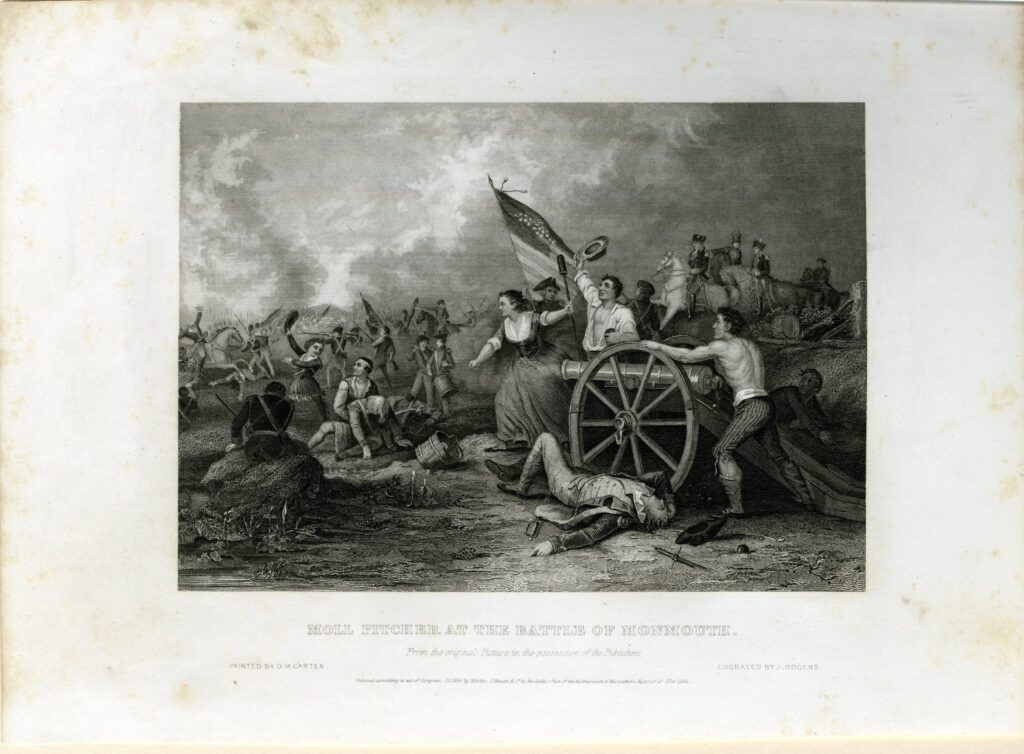
Moll Pitcher at the Battle of Monmouth
D. M. Carter, artist and John Roger, engraver
New York, 1856The American Revolution Institute of the Society of the Cincinnati
Battle scene with Molly Pitcher in the center assisting two solders fire a cannon next to an officer who lies mortally wounded. In the background to the right are a group of officers on horseback, the first of which appears to be George Washington.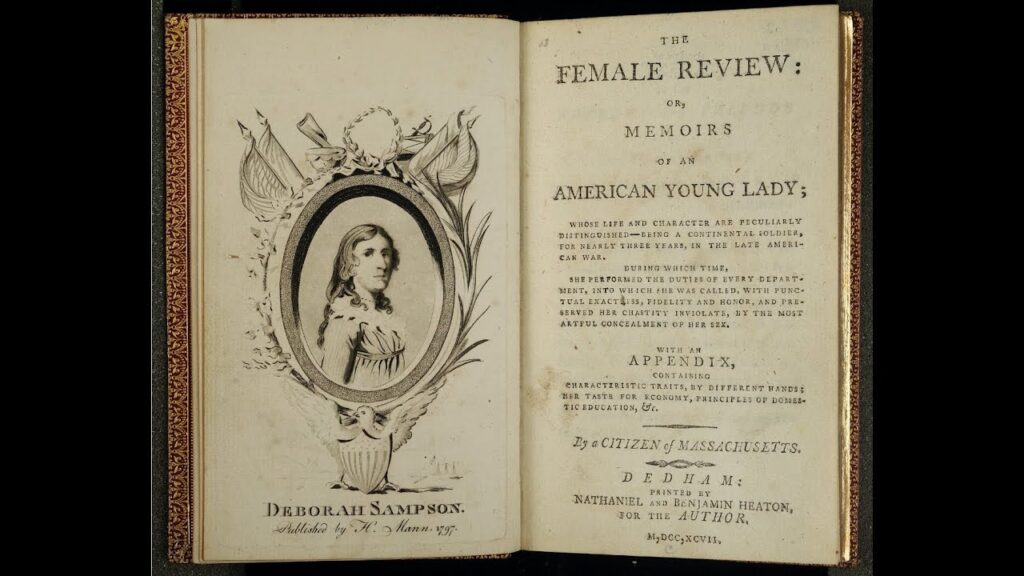
Deborah Sampson at War
Rachel Nellis
May 15, 2020The American Revolution Institute of the Society of the Cincinnati
Mixing fact with romantic inventions, the book was published to support Deborah’s application for a pension, which she was granted in 1805. Sampson’s life and the creation of this book are a starting point for discussion of the treatment of enlisted men and woman combatants after the war.
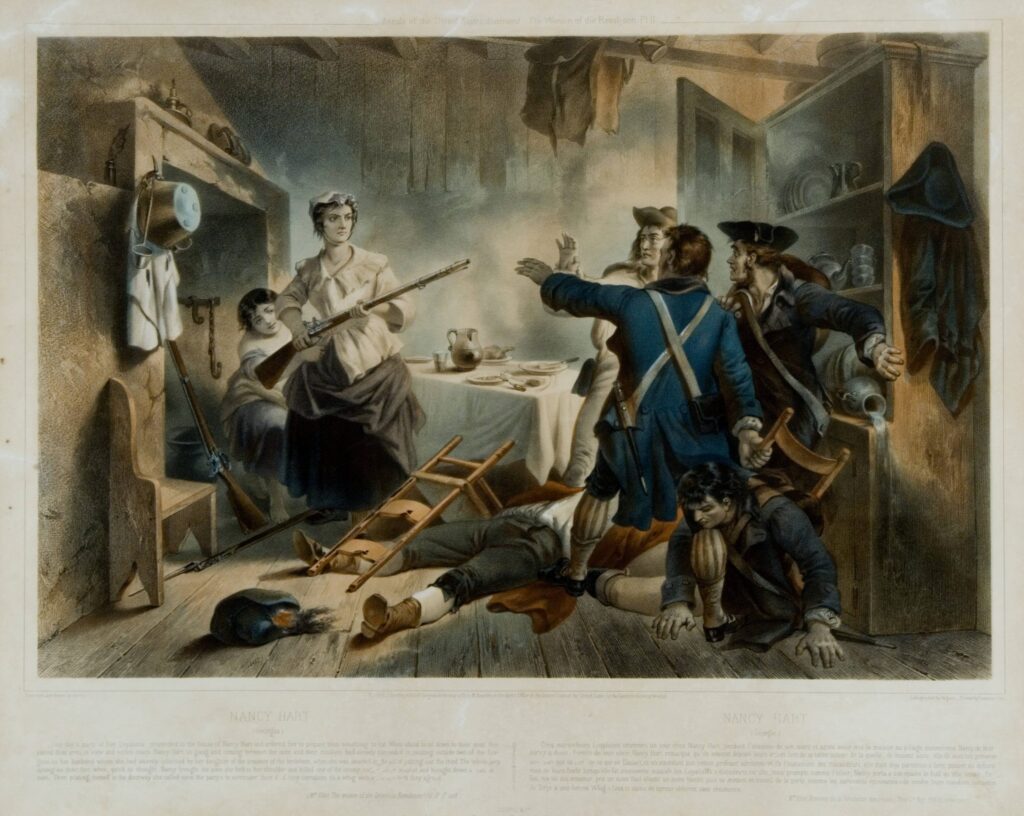
Nancy Hart (Georgia)
Felix Darley, artist and Charles Regnier, engraver
New York: Groupil & Co., 1853The American Revolution Institute of the Society of the Cincinnati
Scene of Nancy Hart, holding a rifle as her daughter crouches behind her after being discovered passing the rifles of the five British Loyalist's to her father while the enemy were eating the meal they had required Nancy Hart to prepare for them. Confronted by the soldiers, Nancy Hart used one of their rifles to kill one man and injure a second after which the enemy surrendered.